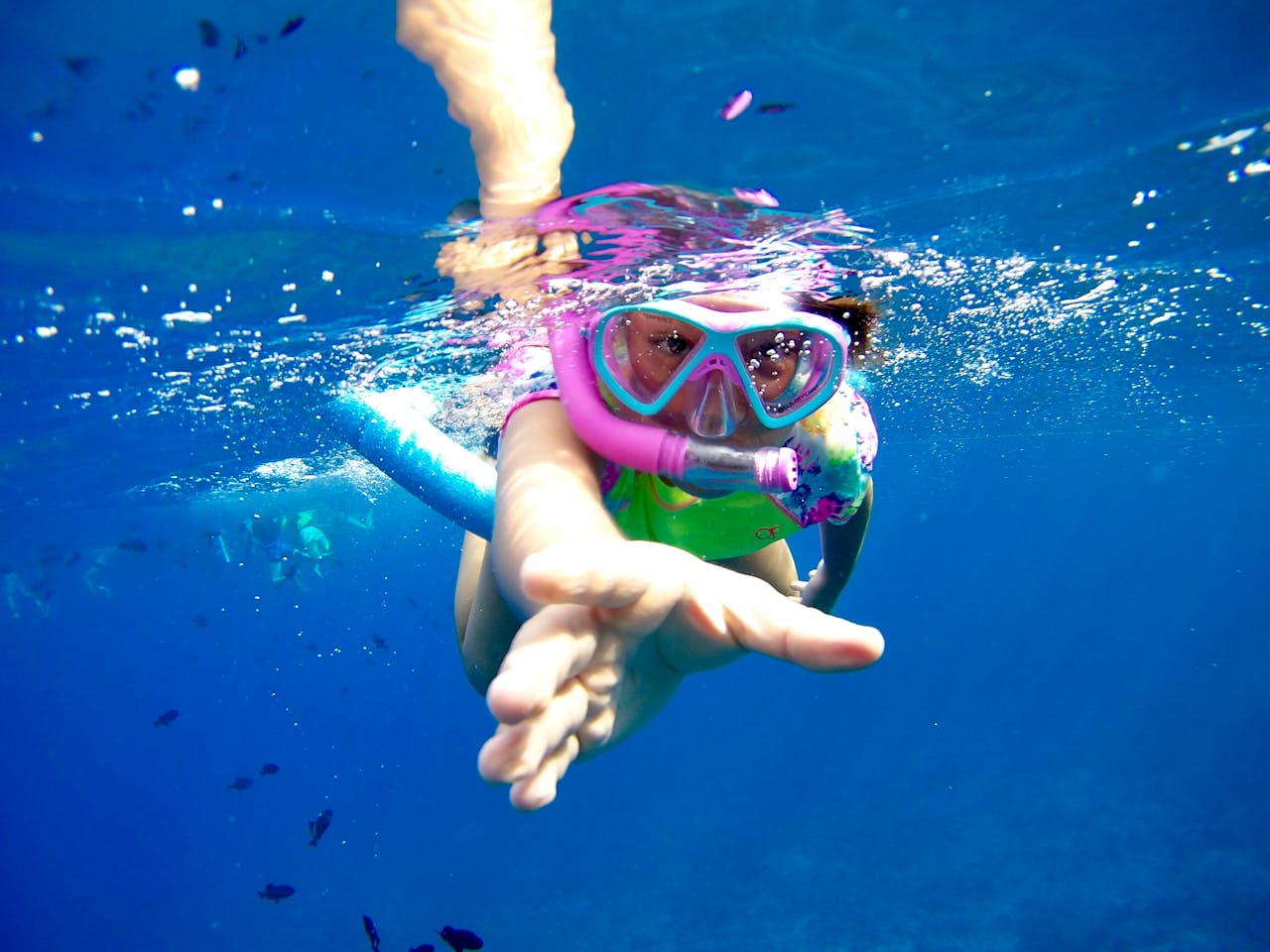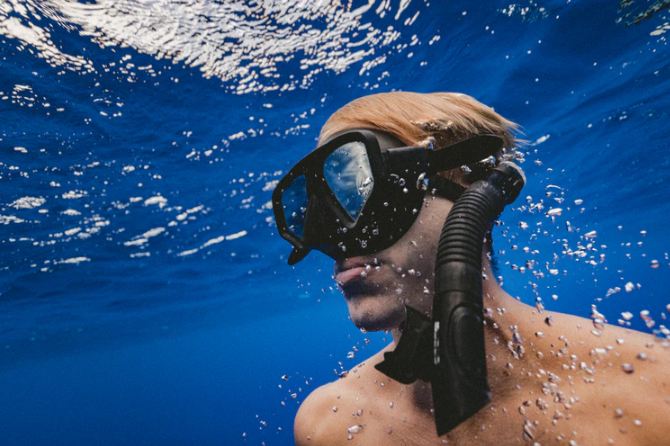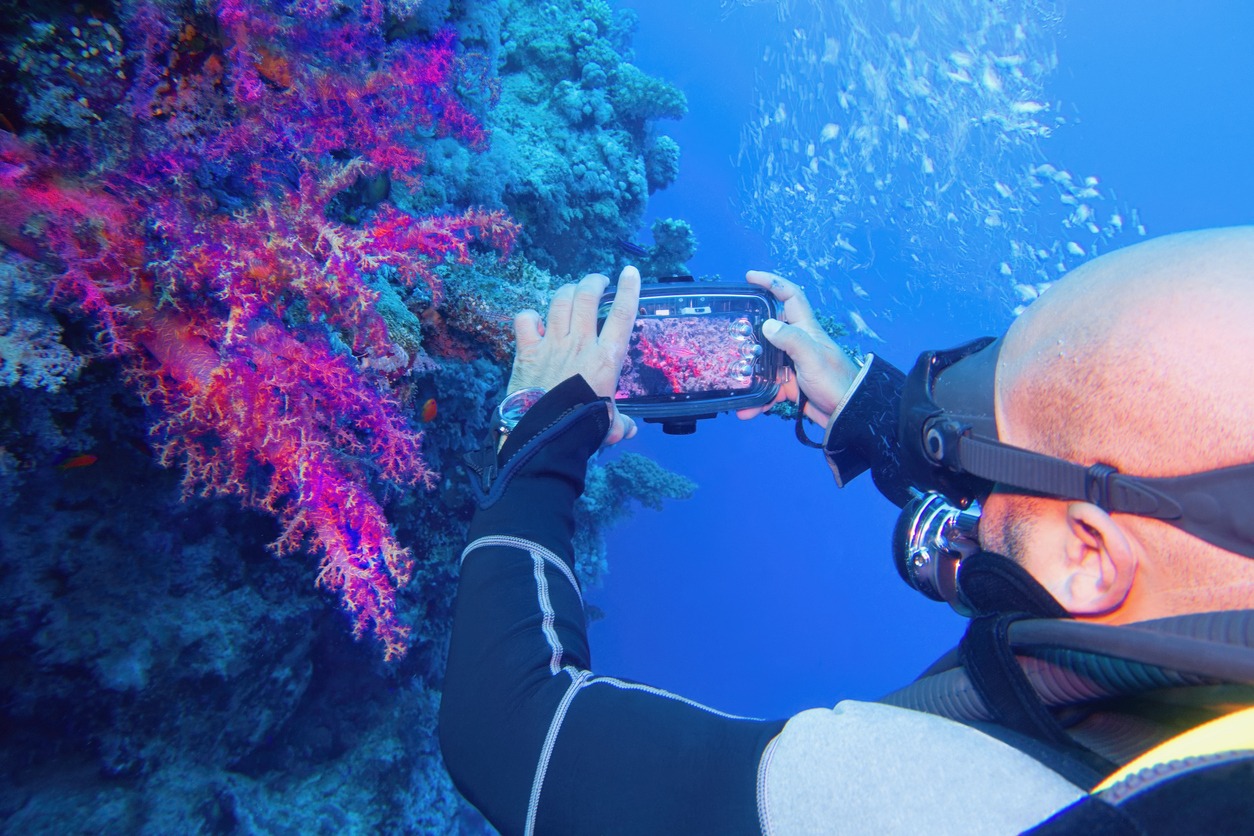Tips for Taking Kids Snorkeling: A Guide for Safe Family Fun
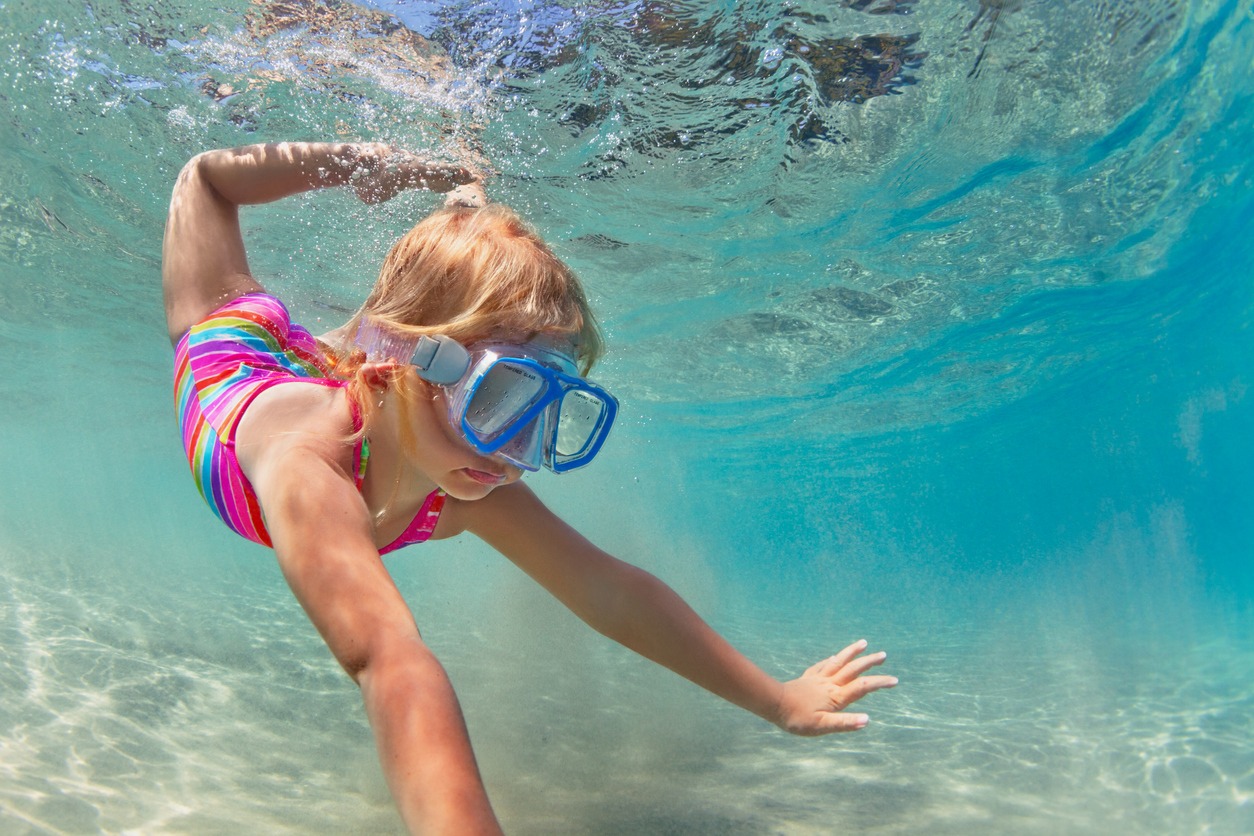
When taking kids snorkeling, start by evaluating their readiness, typically around ages 5-6. Choose kid-friendly gear with soft silicone masks and comfortable snorkels. Prioritize safety by maintaining constant visual contact and using life jackets in calm, shallow waters. Build water confidence through practice in pools or controlled environments. Teach proper breathing techniques and snorkel clearing. Select sheltered bays with good visibility for your family adventure. Make marine life exciting by providing identification cards and encouraging observation. By following these tips, you'll create a safe and memorable underwater experience for your children. Plunge deeper to uncover more ways to enhance your family's snorkeling adventure.
Assessing Your Child's Readiness
Many parents wonder when their child is ready to start snorkeling. While kids as young as 5 or 6 can begin, it's essential to assess your child's individual readiness before diving in. The key factor isn't necessarily swimming prowess, but rather their comfort and confidence in the water. Children as young as 3 can enjoy and investigate the underwater world, but maturity to follow directions and instructions is important.
To gauge your child's readiness, observe their behavior during regular water activities. Are they at ease in the pool? Do they panic when water splashes their face? These indicators can help you determine if they're prepared for snorkeling. Start by introducing the snorkel gear in a controlled environment, like a swimming pool. Let your kids practice wearing the mask and breathing through the snorkle before venturing into open water.
Safety should always be your top priority. Consider using life jackets or snorkel vests for added security, especially for less confident swimmers. Remember, snorkeling is a family activity that should be enjoyable for everyone. Take it slow, adjusting the pace to your child's comfort level. With patience and practice, your kids will soon be investigating the underwater world alongside you, creating unforgettable family memories.
Choosing Kid-Friendly Snorkeling Gear
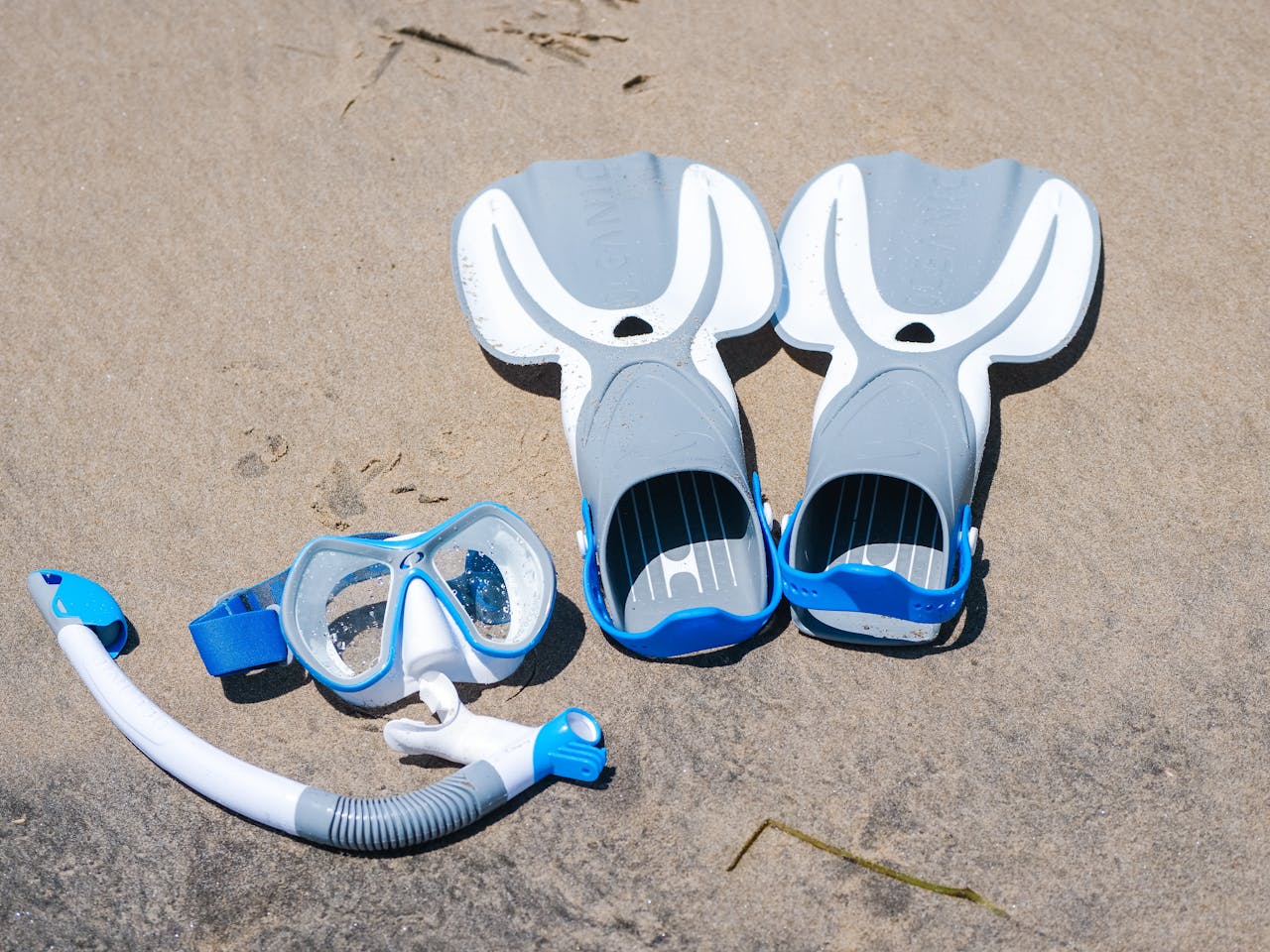
Selecting the right snorkeling gear for your kids is essential for their safety, comfort, and enjoyment. When choosing kid-friendly snorkeling gear, focus on masks with soft silicone skirts and tempered glass lenses for optimal visibility and comfort. Look for snorkels with comfortable mouthpieces and dry snorkel designs to minimize water entry. For fins, opt for adjustable-strap models that provide a secure fit and adequate propulsion for young swimmers.
To guarantee your child's comfort level and safety, consider these key points when selecting snorkeling gear for kids:
- Choose masks and snorkels specifically designed for children
- Look for snorkel masks with soft, flexible silicone skirts
- Select fins with adjustable straps for a secure fit
- Invest in rashguards with high UPF ratings for sun protection
- Opt for gear made from durable materials to withstand regular use
Safety First: Essential Precautions
With the right gear in hand, it's time to focus on keeping your kids safe while snorkeling. Always maintain constant visual contact and keep an eye on your children in the water. Guarantee they wear properly fitted life jackets or snorkel vests for added buoyancy and safety. These safety measures are crucial for kids who aren't yet comfortable in the water.
Choose calm, shallow waters for beginner snorkelers to minimize risks. Before heading out, teach your children how to clear their snorkel if it gets water in it, preventing panic and ensuring they can breathe through the snorkel comfortably. Dry snorkels can also help prevent water entry. Review emergency procedures and have a plan in place for responding to any issues that may arise.
When selecting snorkeling spots, opt for low-traffic locations where your kids can practice without interference. As they gain confidence, gradually introduce them to deeper waters. By prioritizing safety and starting in controlled environments, you'll help encourage a lifelong love for snorkeling. Remember, even with masks available and kids fins on, supervision is key to ensuring a safe and enjoyable experience for the whole family.
Building Water Confidence
Building water confidence is essential for kids to enjoy snorkeling safely. Start in shallow water or a controlled pool environment to familiarize your children with the water and snorkeling gear. Before introducing snorkeling, guarantee they can float, tread water, and swim short distances. This foundation will help them feel more comfortable as they progress.
To build water confidence and prepare your kids for snorkeling, focus on these key steps:
- Teach proper mask and snorkel fit and usage in a pool
- Practice breathing techniques and snorkel clearing
- Use life jackets or vests for added security and buoyancy
- Encourage relaxation and praise progress
- Gradually increase practice duration and depth
As you work through these steps, remember to keep sessions fun and positive. Start with short practice sessions and slowly extend them as your child's confidence grows. Teach them to use their mask and snorkel effectively, ensuring they can clear water from the snorkel and adjust their mask as needed. By building water confidence gradually, you'll help your kids develop the skills and comfort level necessary for a safe and enjoyable snorkeling experience.
Practicing Snorkeling Techniques
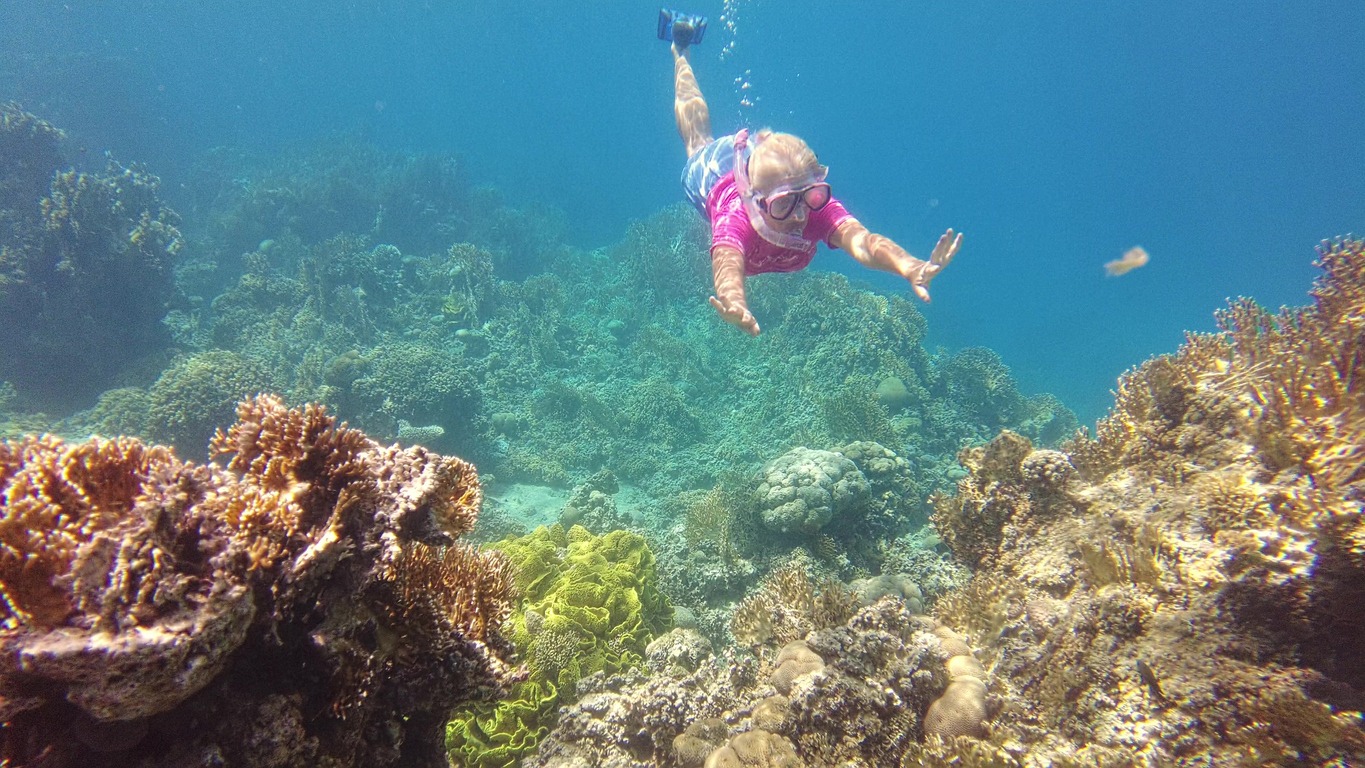
Once your kids have built water confidence, it's time to focus on practicing essential snorkeling techniques. Start by having your children practice breathing through the snorkel in a pool or bathtub. This will help them get comfortable with the equipment and breathing underwater. Guide them on how to clear water from the snorkel and equalize pressure in their ears, as these skills are fundamental for a safe and enjoyable experience.
Next, have your kids practice swimming short distances while keeping their face submerged and breathing through the snorkel. Gradually increase the duration and difficulty of these pool-based exercises before transitioning to open water. Make sure to emphasize the importance of staying relaxed and maintaining a natural breathing rhythm when snorkeling.
As your children become more comfortable breathing through the snorkel, introduce masks and fins. These additional pieces of equipment will enhance their first snorkeling experience. Remember to take it slow and make sure your kids are ready before heading out to open water. By following this guide and practicing these techniques, you'll help your children become confident and comfortable breathing underwater, setting the stage for a memorable family snorkeling journey.
Selecting the Perfect Snorkeling Spot
When it comes to selecting the perfect snorkeling spot for kids, safety and accessibility should be your top priorities. Look for sheltered bays with calm, shallow waters and good visibility. These areas provide an ideal environment for beginner snorkelers and guarantee a family-friendly experience. Avoid locations with strong currents or heavy boat traffic, as these can pose risks to young swimmers.
Consider these factors when choosing your family snorkeling destination:
- Easy beach entry points for convenient access
- Abundant marine life and coral reefs to engage kids
- Proximity to amenities like restrooms and picnic areas
- Local regulations and required permits
- Safety precautions in place, such as lifeguards or marked snorkeling zones
Research potential snorkeling spots beforehand to find the best fit for your family. Many popular destinations offer guided tours specifically designed for families, which can be an excellent option for first-time snorkelers. Remember to teach your children about the importance of protecting coral and marine ecosystems during your outing. By selecting the right location and following proper safety guidelines, you'll create lasting memories while introducing your kids to the wonders of underwater exploration.
Making Marine Life Exciting
The underwater world is a bounty of excitement for young snorkelers. To make their first snorkeling excursion truly memorable, provide children with identification cards or books featuring marine species they might encounter. This will spark their curiosity and help them recognize the captivating underwater world around them.
Encourage children to document their marine adventure using a waterproof camera. This allows them to capture and share their unique perspectives of underwater life. As you explore, educate them about the roles different species play in the ecosystem, nurturing a deeper appreciation for ocean biodiversity.
It's pivotal to teach children the importance of respecting the environment by not touching or disturbing coral, plants, and wildlife. Instill a sense of responsibility towards ocean conservation, empowering them to become advocates for protecting marine ecosystems.
Overcoming Common Challenges
Snorkeling with kids can present unique challenges, but with the right approach, you can surmount common obstacles. Building confidence is key when introducing children to snorkeling. Start by acclimatizing them to the gear in a pool, ensuring they're comfortable before venturing into open water.
To help kids overcome their fears and anxieties, consider these expert tips:
- Choose calm, shallow locations for their first time
- Teach proper mask fit and breathing techniques
- Address concerns through validation and encouragement
- Model enthusiasm and safety awareness
- Gradually progress to more challenging environments
When snorkeling with children, focus on making sure they're comfortable every step of the way. Teach them essential skills like swimming with fins and clearing their mask to prevent water from entering. Practice these techniques in a controlled environment before heading to open water.
Preserving Underwater Environments
Preserving underwater environments is a pivotal aspect of responsible snorkeling with children. As you explore marine ecosystems with your kids, it's crucial to instill a sense of respect for the delicate underwater world. Teach your children to observe marine life from a distance, avoiding any contact with coral, plants, or animals. Explain the importance of not chasing or feeding wildlife, as this can disrupt their natural behaviors and habitats.
Before your snorkeling adventure, familiarize yourself with local regulations and obtain any necessary permits, especially when visiting protected areas. Educate your kids about ocean conservation and the concept of leaving no trace. Encourage them to be mindful of their actions and how they impact the marine environment.
Proper disposal of waste is essential to protect underwater ecosystems. Ensure your family understands the importance of not leaving any debris behind and picking up any litter they may find. By following these guidelines and using snorkel gear responsibly, you'll help conserve these precious environments for future generations. Remember, teaching kids to respect and protect marine life while snorkeling nurtures a lifelong appreciation for our oceans.

